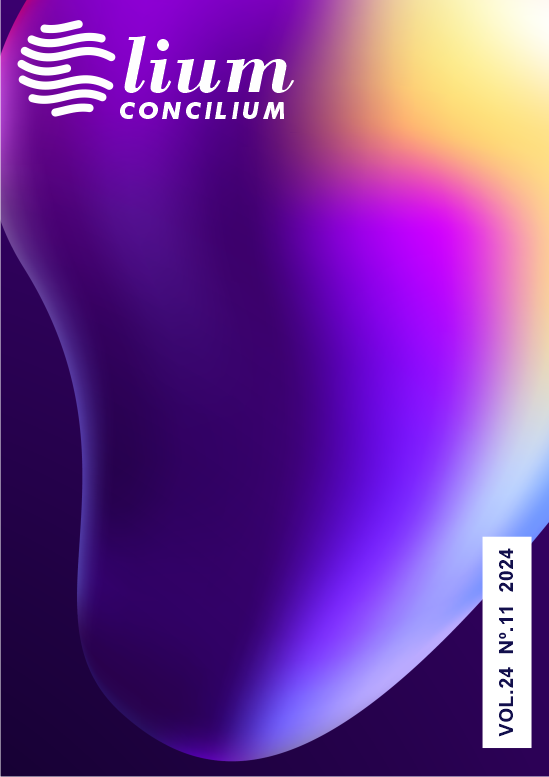Silence program in a Neonatal Intensive Care Unit
Programa de silêncio em uma Unidade de Terapia Intensiva Neonatal
Resumo
Objective: To compare sound pressure levels in a NICU during three periods and analyze the installation of the light sensor by health professionals. Methods: This is an intervention study carried out in a NICU of a reference hospital in Brasília-Distrito Federal (DF), with the installation of a light noise sensor inside the unit. Ambient noise was measured using the Quest 400 dosimeter for one week and every shift at time 0 and 2 (measurement of noise levels using the dosimeter). Results: It can be seen that there was a reduction in noise measurement between moments 0 and 1, ranging from 2 dB to 9 dB. Therefore, there was a significant difference between the sound pressure level values with the implementation of the intervention in the NICU (p <0.04). Regarding the introduction of the light sensor, p>0.094 was obtained, showing that there were no differences between shifts. Conclusion: Although there was a reduction in noise in the post-intervention period, an increase in noise was found six months after the intervention program, highlighting the need for measures that support changes in educational programs.
Downloads
Referências
ALMADHOOB, A; OHLSSON, A. Sound reduction management in the neonatal intensive care unit for preterm or very low birth weight infants. Cochrane Database Syst Rev, ano 2020, v. 27, ed. 1, p. 208 - 209., 20 fev. 2020. DOI doi/10.1002/14651858.CD010333. Disponível em: https://pubmed.ncbi.nlm.nih.gov/31986231/. Acesso em: 9 maio 2024.
ANDRADE, C.S.A; ALVES, A.C; SILVA, M.A.A;. Ruído: a percepção dos profissionais de uma UTI Neonatal. Brazilian Journal of Health Review, ano 2023, v. 6, ed. 6, p. 30907-30918, 5 dez. 2023. DOI:10.34119/bjhrv6n6-333. Disponível em: https://ojs.brazilianjournals.com.br/ojs/index.php/BJHR/article/view/65432. Acesso em: 9 maio 2024.
BARSAM, F.J.B.G et al . GERENCIAMENTO DE MUDANÇAS PARA CONTROLE DO RUÍDO NA TERAPIA INTENSIVA NEONATAL: RELATO DE EXPERIÊNCIA. Reme : Rev. Min. Enferm., Belo Horizonte , v. 23, e-1154, 2019 . Disponível em <http://www.revenf.bvs.br/scielo.php?script=sci_arttext&pid=S1415-27622019000100501&lng=pt&nrm=iso>. acesso em 09 maio 2024. Epub 09-Maio-2019. http://dx.doi.org/10.5935/1415-2762.20190001.
BARSAM, F.J.B.G; SILVA, N.Y.E.; URAMOTO, L.C.L; TEIXEIRA, C.L.S.B; CAMARGO, F.C; ZULLO,S.A. Identificação do ruído ao longo dos turnos na terapia intensiva neonatal de hospital de ensino. J. nurs. health., ano 2019, v. 9, ed. 2, 8 out. 2019. DOI https://doi.org/10.15210/jonah.v9i2.16201. Disponível em: https://periodicos.ufpel.edu.br/index.php/enfermagem/article/view/16201/10593. Acesso em: 10 maio 2024.
CASEY, L; FUCILE, S; FLAVIN, M; DOW, K. A two-pronged approach to reduce noise levels in the neonatal intensive care unit. A two-pronged approach to reduce noise levels in the neonatal intensive care unit, Early Hum Dev, v. 146, 13 maio 2020. DOI https://doi.org/10.1016/j.earlhumdev.2020.105073. Disponível em:https://www.sciencedirect.com/science/article/abs/pii/S0378378220300232?via%3Dihub. Acesso em: 9 maio 2024.
FAAL , G; DAVODI, A; TAHERI, F; ABOLHASNNEZHAD, V. A. Impact of Educational and Visual Sign Interventions on Noise Reduction in Neonatal Intensive Care Units (NICUs). Research article, ed. 1, p. 1-13, 28 out. 2019. DOI doi.org/10.21203/rs.2.16506/v1. Disponível em: https://assets.researchsquare.com/files/rs-7148/v1/46065882-e76d-4ae3-9751-d7ab6b879b2f.pdf?c=1631828156. Acesso em: 9 maio 2024.
FERRAZ, L; PEREIRA, R.P.G.; PEREIRA, A.M.M.R.C.Tradução do Conhecimento e os desafios contemporâneos na área da saúde: uma revisão de escopo. SAÚDE DEBATE, v. 43, n. 2, p. 200-216, 24 ago. 2019. DOI 10.1590/0103-11042019S215. Disponível em: https://www.scielo.br/j/sdeb/a/hVLgmkWFGwytPvC3BkwLgZk/?format=pdf&lang=pt. Acesso em: 9 maio 2024.
GODARZI, Z; OSKOUIE, F; AZAM, K; MONAZZAM, M; LONI, T; GHASEMI, J; AHMADPOOR, M. Effect of the Training of Nurses on the Reduction of Noise Pollution in Intensive Care Units. Iran Journal of Nursing (IJN), ano 2019, v. 31, ed. 116, p. 75-85, 21 fev. 2019. DOI file:///C:/Users/eb/Downloads/729139711608%20(1).pdf. Disponível em: file:///C:/Users/eb/Downloads/729139711608%20(1).pdf. Acesso em: 9 maio 2024.
NEGRETTO, T.C; FONSECA,P.M.M; SILVA, R.R. 7. Unidade de Tratamento Intensivo Neonatal: principais fontes geradoras de ruídos sonoros. Revista Científica UMC, [S. l.], v. 3, n. 1, 2018. Disponível em: https://seer.umc.br/index.php/revistaumc/article/view/188. Acesso em: 9 maio. 2024.
PACHECO, R.N; MACHADO, M.E.D; SILVA, L.P; PAIVA,E.D; SILVEIRA, A.L.D; SANTOS,L.M. Nível de ruídos na unidade neonatal. Rev enferm UERJ, v. 31, p. 1-6, 23 ago. 2023. DOI http://dx.doi.org/10.12957/reuerj.2023.71347. Disponível em: https://www.e-publicacoes.uerj.br/enfermagemuerj/article/view/71347. Acesso em: 9 maio 2024.
SILVA,E.M.B; RAMOS,A.C.F.S; DUARTE,J.C; SILVA,D.M. Noise in neonatology: perception of health professionals. Revista de enfermagem referência, ano 2019, v. 4, ed. 20, p. 67-76, 11 fev. 2019. DOI 10.12707/RIV18078. Disponível em: https://www.researchgate.net/publication/332089389_Noise_in_neonatology_perception_of_health_professionals. Acesso em: 9 maio 2024.
SOUSA, V.O; BELEZA, A.P.M; SOUZA,L.G.B; SOUZA, R.L.U.F. Implantação da escala para avaliação da dor em uma Unidade de Terapia Intensiva Neonatal (UTIN) Pública. [s. l.], ano 2021, v. 13, ed. 8, p. 1-8, 9 maio 2024. DOI https://doi.org/10.25248/reas.e8451.2021. Disponível em: https://acervomais.com.br/index.php/saude/article/view/8451/5231. Acesso em: 9 maio
ROCHA, A.D; SÁ, P.M; REIS, D.B.C; COSTA,A.C.C. “HORÁRIO DO SONINHO”: UMA ESTRATÉGIA PARA REDUZIR OS NÍVEIS DE PRESSÃO SONORA EM UMA UNIDADE DE TERAPIA INTENSIVA NEONATAL. Enferm. Foco, ano 2020, v. 11, ed. 1, p. 114-117, 11 fev. 2020. DOI 10.21675/2357-707X.2020.v11.n1.2698. Disponível em: C:/Users/eb/Downloads/2698-20306-1-PB.pdf. Acesso em: 9 maio 2024.



